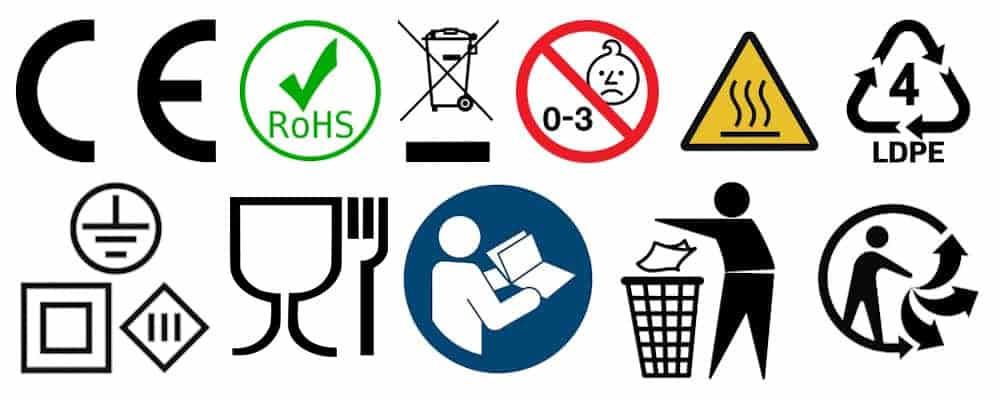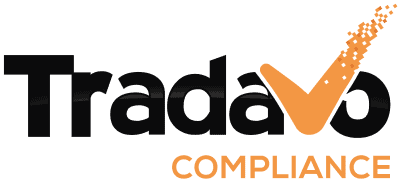Banned on Amazon - but why?
There is a wide variety of possible reasons for your product or your entire Amazon account to be banned. Often, the ban is due to a trivial mistake such as a non-conforming legal notice, bad customer reviews, non-compliance with promised delivery periods in the case of dispatch by the seller, or repeated violation of Amazon’s TOS.
However, sellers are increasingly being banned because of product compliance-related issues. Either because Amazon discovered relevant infractions, or because a competitor pointed such infractions out to them. The result is the same: The product, or your entire account, will be banned.
Getting either one unbanned is usually not that simple, and sometimes depends very much on the support staff you are speaking with. Even after any mistake has duly been corrected.
Therefore, it is best not to let things go this far at all. This is why we would like to explain the most common product compliance issues that can lead to a ban on Amazon in this blog post.
Please note that this overview does not claim to be exhaustive as the reasons for a ban can change at any time, either because Amazon changes them or due to new laws coming into effect.
Message from Amazon: Now what?
Like with any other inquiry, the first rule is: Keep calm. Important messages like this one in particular should always be read carefully – and preferably repeatedly. It is not all that rare for such a message to be triggered by Amazon’s algorithm. The underlying problem can be solved quite easily.
Product/account ban on Amazon: Possible product compliance-related reasons
Wrong categorization by the seller
Wrong categorization by the seller is one of the most common reasons for a product ban on Amazon. Sellers often list their products in less competitive categories in order to gain the bestseller badge more easily.
This is a problem in particular if you list a product that is not subject to CE marking requirements in a category that requires a CE marking, such as toys or electrical and electronic equipment. Your product will then be wrongly evaluated by the Amazon algorithm, requesting various documents that are not, in fact, necessary for the specific product. This often happens with pillows or muslin wipes for babies, for example.

The same is true for products that are not suitable as food for humans, but listed in a food category, e.g., as food supplements. Common examples include cosmetics and essential oils. Sooner or later, Amazon will request additional documents from you – which you will not be able to procure, since you are in fact selling an entirely different product.
Missing documentation
Declaration of conformity
Again, you should first check whether the product was correctly categorized by Amazon. It is possible that you do not need a Declaration of Conformity for the respective product, which means that you can easily resolve the problem.
When it comes to standards, make sure that you specify the correct standards. Don’t forget anything, and don’t specify the wrong standards, either. Furthermore, always indicate the latest version of the standards. Since standards are amended at irregular intervals, it is important to be up to date at all times, and to update the standards, e.g., once per year.
Attention: The structure of a declaration of conformity for Amazon can differ from the statutory structure because Amazon has their own rules for this. Depending on the product, you may need a special declaration of conformity for Amazon. However, do not submit it to authorities as authorities do not accept this kind of declaration of conformity.
REACH declaration
For some time now, Amazon has been asking for a so-called REACH declaration for products of certain categories. This often concerns sellers in the field of (costume) jewelry.
Just like the Declaration of Conformity, you can either prepare this declaration yourself or commission a service provider such as Tradavo to do it for you. To date, all the declarations for Amazon prepared by us have been accepted. So if you want to play it safe, make an appointment for an initial consultation right away.
You need assistance?
It is best to book an appointment directly for a free initial consultation.
EN and DIN standards
Normally, only compliance with so-called harmonized standards is prescribed by law. Compliance with these standards must not be used for advertising purposes.
In addition, there is a wide variety of other standards, and you can have your product tested for compliance with them on a voluntary basis. Only if you pass such a test are you allowed to use this for advertising purposes on Amazon. In addition, you can reduce your liability risk in the case of an injury caused by your product.
For some products such as toys or products for babies, Amazon mandatorily requires these otherwise voluntary tests. To be able to even offer such a product on Amazon, you must first upload the corresponding documents.
Free sale certificate and HACCP for food
The free sale certificate has to be issued by a food laboratory certifying that the product’s formula, among others, complies with the German and/or European market requirements. As for HACCP (link in German only), the food producer and/or the contract filler company has to be able to produce a HACCP certificate issued by an independent third party.
Incorrect labeling
This blog post already dealt with the issue of incorrect labeling of products and packaging. Still, we would like to address this issue again here.
Incorrect product labeling
Product labeling mistakes are most commonly made in connection with the address. If you sell private label products, you have to indicate your own company address because you are considered to be a (quasi) manufacturer. For sole traders, this means that you have to indicate your first and last name.
If your company’s registered office is not located in an EU country, you have to appoint an EU authorized representative or indicate the importer. These addresses have to be affixed e.g., to the packaging in addition to your own company’s address. You do not have an EU authorized representative yet? No problem—Tradavo can help you there, too.
If you want to sell your products in Great Britain, but you do not have an office there, you need a UK authorized representative or another economic operator located in the UK.
Please note: Information has to be provided in the languages of the countries to which the product is to be dispatched!
Other mistakes in product labeling include:
- missing article number, model number and/or batch number
- missing or wrongly affixed CE marking
- wrongly affixed WEEE label
- missing or wrongly affixed 0–3 warning symbol, including corresponding warnings in text form
- missing warning symbols, warnings and safety information, and instructions for use
- missing or incorrect textile labeling or specification of the fiber composition
- missing or incorrect recycling label: recycling symbols such as LDPE4 or the Triman label specifically for France
- incorrect FSC label, e.g., if the manufacturer’s certification number is missing. The number of a supplier or your own marketing license is not sufficient!
- attachment of the RoHS symbol: must not be affixed because it is part of CE!

Incorrect packaging labeling
Since many of the mistakes are similar to those in product labeling, we have compiled an abridged list for you.
- missing or incorrect address
- missing article number, model number, batch number
- missing or wrongly affixed CE marking
- missing or wrongly affixed 0–3 warning symbol
- missing warning symbols, warnings and safety information, and instructions for use
- missing or incorrect textile labeling or specification of the fiber composition
- missing or incorrect recycling label: eco-labeling specifically for Italy
- incorrect FSC label
- attachment of the RoHS symbol
Other possible labeling mistakes
If you use polybags for the packaging of your products, they must also be equipped with the correct recycling labels. Furthermore, you have to place “risk of suffocation” warnings in the languages of all the countries that your product is dispatched to.
Mistakes can also happen in connection with the manual, e.g.:
- insufficient information regarding
- storage of the manual
- intended use
- initial commissioning
- handling
- cleaning
- storage
- incorrect address
- incorrect article number or model number
- missing or wrongly affixed CE marking
- missing written information for households pursuant to the Electrical and Electronic Equipment Act (ElektroG), including the WEEE symbol
- missing or wrongly affixed 0–3 warning symbol
- attachment of the RoHS symbol
- missing languages
Missing registrations
Failure to participate in the dual system of the countries that your products are dispatched to can result in a product or even account ban on Amazon. This concerns not only packaging, but also electrical equipment and batteries as well as textiles in France, among other things.
Amazon is currently assessing the participation in the German and the French system. The assessment for Austria is scheduled for this year. Since 2023, non-Austrian companies furthermore need a packaging officer.
EPREL - European Product Registry for Energy Labeling
Since January 1, 2019, suppliers, manufacturers, importers and authorized representatives registered in the EU have to register their products (such as electric lights) with the European Product Registry for Energy Labeling. This database has been accessible to the public since May 2022.
Amazon verifies whether a product has been registered. This frequently results in product bans because combined products in particular, e.g., an inductive charging station with integrated night light, may be subject to registration and labeling requirements due to the electric light.
BAuA registration number
Biocidal products, e.g., wood varnish, sold on the German market and planned to be sold there in the future have to be registered with the Federal Institute for Occupational Safety and Health (Bundesanstalt für Arbeitsschutz und Arbeitsmedizin, BAuA) pursuant to the Biozid-Meldeverordnung (Ordinance on the notification of existing biocidal products).
Amazon requests this registration number for relevant products. If it is not provided, the product is banned. The respective BAuA registration number must also be affixed to the product label and indicated in the listing.
So you see: There are many, seemingly small mistakes that can cause your product listing or your entire Amazon account to be banned. If you feel overwhelmed by all the rules and regulations—no problem. We are happy to help you find your way through the jungle of regulations. Contact us here for a non-committal initial consultation with our compliance experts.
You need assistance?
It is best to book an appointment directly for a free initial consultation.
Who wrote this article?
As an author, Christina fills the blog section of our website with exciting and informative articles, so that our readers can always take care of product compliance in their company in the most well-informed way.




